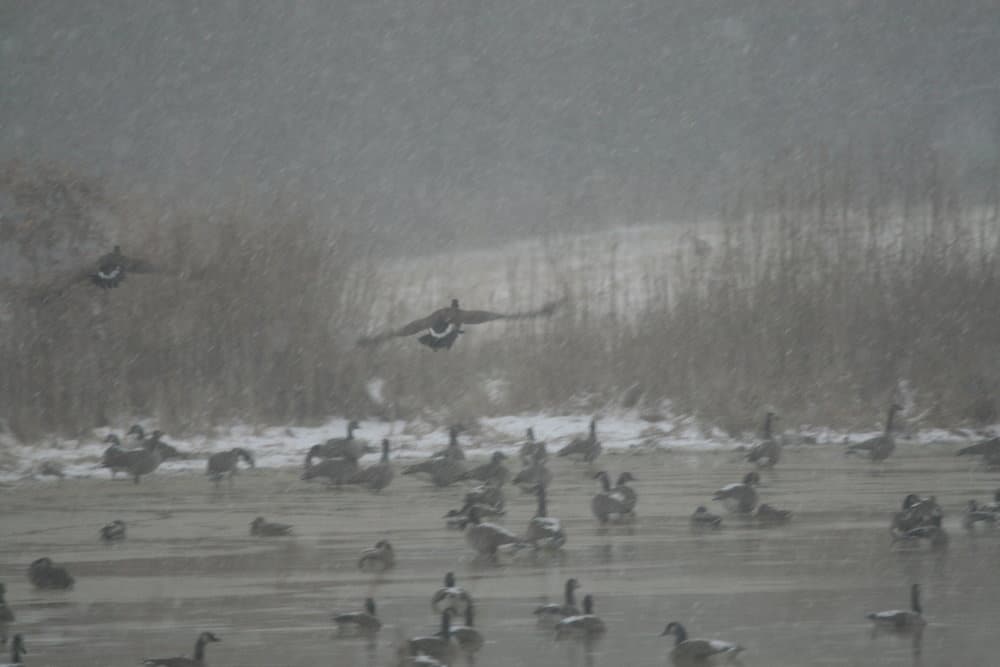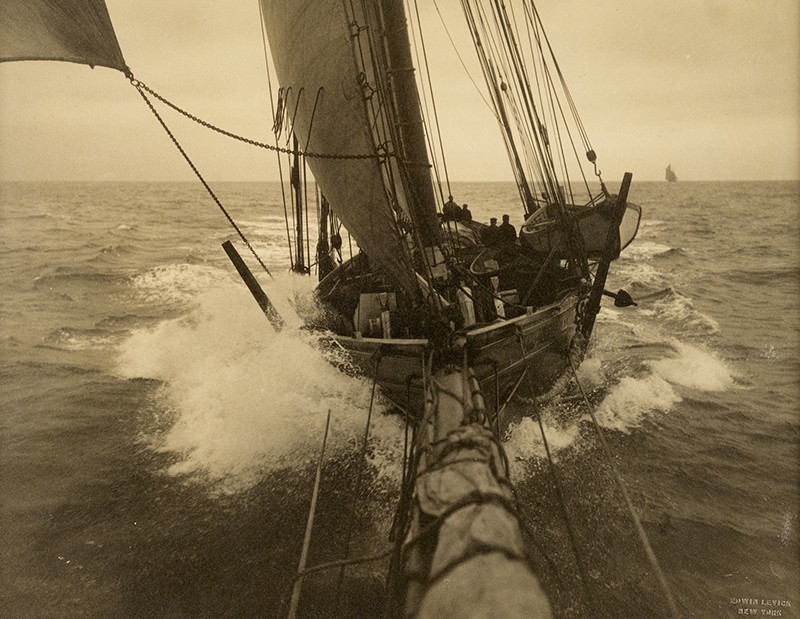Chesapeake outdoor guide Captain Chris Dollar brings up-to-date insight to the Bay Bulletin. Check in weekly to see what’s happening out there.
The Maryland Canada goose season ended last Saturday on a high note for many waterfowlers. Next season, however, regulators will implement a reduction in the daily bag limit from two birds to one during a 30-day season. (Photo by Chris D. Dollar)The Maryland Canada goose season ended last Saturday with many gunners enjoying successful hunts around the Atlantic flyway, especially on Eastern Shore agricultural fields. Virginia’s migratory Canada goose season closed on January 27, and the Commonwealth’s resident goose season runs through February 20 in well-defined zones. Maryland’s resident geese may be taken in certain western counties through March 9.
Last week, we did well on a southern Maryland farm where the geese put on a spectacular show. Next season, however, the Chesapeake (Delmarva) region will have a reduction in the daily bag limit from two geese to one with a 30-day season held between November 15 and February 5, probably divided into two splits. Pennsylvania and New York hunters will see their daily bag drop from three to two geese in 2019-20. Maryland’s Department of Natural Resources (DNR) will host a public hearing on March 6 at Chesapeake College in Wye Mills to present the options.
The cuts necessary due to poor breeding results in seven of the past ten years for the Atlantic Flyway goose population. In fact, aerial surveys conducted this past spring revealed one of the worst breeding seasons in almost 20 years. Only 115,000 nesting pairs were observed compared to nearly 200,000 in 2016.
Breeding success on the Arctic is largely weather driven, and biologists and wild game managers say hunters have had little to do with the decline since they take only about 10 percent of the breeding population in an average year. Cutting the season length and reducing the number of birds waterfowlers are allowed combined with several good nesting years should increase brood pairs and result in an uptick in the population.
Sportsmen and outfitters I’ve spoken with understand that we need to take action to avoid a complete shutdown. No one wants a repeat of 1995 when a six-year ban on hunting was necessary to allow the Canada goose population to recover. “Conserve more birds today for more birds tomorrow,” is the word I’m getting.
Elsewhere on the winter hunting scene, Maryland’s 2019 winter turkey season ran January 17 through 19, during which hunters reported taking 73 wild turkeys. Frederick, Garrett and Washington counties checked in the most. DNR also says adult males, or gobblers, made up 56 percent of the harvest, with the remainder being females, or hens, and juveniles, also called a jake or a jenny. Eighty-five percent were taken with a shotgun, while the rest of the hunters killed their birds with a crossbow or vertical bow.




